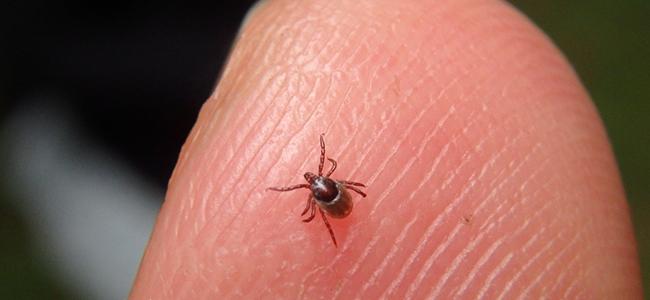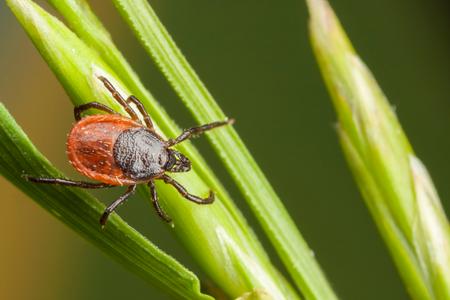
The Best Tick Control For Maryland Properties
10/01/2021
In Maryland, we have some of the most enjoyable weather (for most of the year) for playing out in the yard and enjoying time with our pets. Unfortu...
READ MORE >

Lyme disease was first described as a rheumatoid arthritis outbreak in children in the 1970s in Old Lyme, Connecticut. It was not until 1977 when Dr. Alan Steere and colleagues identified the disease being caused by ticks. The bacteria itself was identified in the 1980s by Willy Burgdorfer. The specific name of the most common Lyme-transmitting tick is called the deer Tick, or the black-legged tick. This tick is commonly found in the DC, Maryland, and Virginia area. Most cases in the U.S. come from the upper northeast region of the country, and the disease has been reported to be on every continent except Antartica.
Ticks are not the originator of the disease, nor can ticks spread the disease to their offspring. The bacteria (B. burgdorferi) is acquired by an infected host--believed to be mostly birds and small mammals--which the tick bites. Once the tick is a carrier, it can then transfer the Lyme-causing bacteria to humans and larger wildlife, however, the bacteria can not be spread from person to person or by larger wildlife.
The bacteria is mostly transmitted by ticks in their nymph stage, which are only a few millimeters big. Nymphs are so small that many people may not even feel them being bitten, let alone identifying them. This is especially true if they attach in an area that is hard to reach or see. In most cases, it takes 24 hours (or more) before the bacteria transfers to the human during feeding. If left untreated, the B. burgdorferi can cause infections through many organ systems by traveling through the bloodstream and attacking different body tissues.
Early Lyme is usually characterized by a 'bull’s eye rash', along with the following symptoms of other common diseases, making it difficult to obtain an accurate diagnosis. Some of those symptoms include fatigue, joint pain, fever, and headaches--resembling the flu. It often takes 1-2 weeks for a rash to develop after being bitten. However, not every infected person develops a ‘bull’s eye rash.’ Once the disease spreads throughout the body via the bloodstream, it is known to cause arthritic, neurological, cardiovascular and other symptoms. There are three clinical stages of Lyme disease: 1) the Localized Early (Acute) Stage, 2) the Early Disseminated Stage and 3) the Late Stage.
Because the early stages resemble many other diseases, it may take a while for Lyme sufferers to receive a proper diagnosis and treatment. The late stage is characterized by arthritis of one or two large joints, disabling neurological disorders, and numbness in the extremities. People of all ages can contract the virus, but it is more prevalent in children ages 0-14, and in adults aged 30 and older. According to the Centers for Disease Control, Lyme disease caused by Borrelia burgdorferi has become the most common vector-borne bacterial disease in the world.

10/01/2021
In Maryland, we have some of the most enjoyable weather (for most of the year) for playing out in the yard and enjoying time with our pets. Unfortu...
READ MORE >

08/23/2021
Ticks are considered to be some of the most dangerous arachnids around. Not only are they famous for biting people, pets, and wildlife creatures, b...
READ MORE >

07/15/2021
Each year, tick populations are on the rise. This is due to a multitude of factors, including climate change and increased tick habitat. Frederick ...
READ MORE >

06/22/2021
It's Pest Prime ...
READ MORE >

Protect your home and family from nuisance and potentially damaging pests with a Preferred Care home pest control plan. Starting at $49/month

Don't let the bed bugs bite a second longer. Contact American Pest for the most comprehensive bed bug control in the industry. Learn More

Our certified rodent control pros will put an end to your frustration by getting rid of rats and mice inside your home. Learn More

Say goodbye to wood-destroying termites in your home when you contact American Pest for expert termite control. Learn More

Trust American Pest to deliver professional backyard tick control services that are guaranteed to get results. Learn More

Don't spend the warm-weather season indoors, find out how American Pest's professional treatments get rid of mosquitoes. Learn More
Fill out the form and recieve feedback in less than 5 minutes. For immediate service please call.